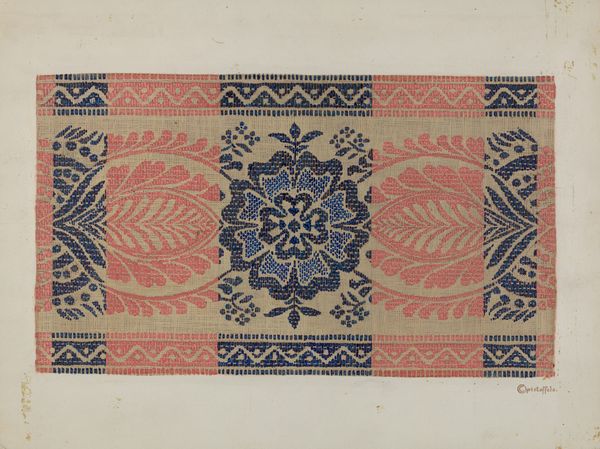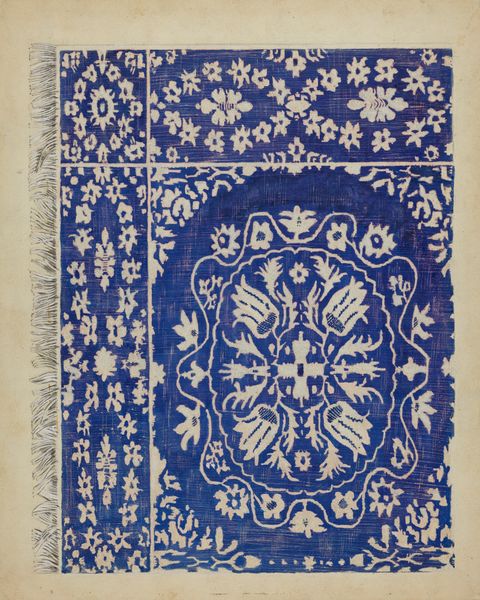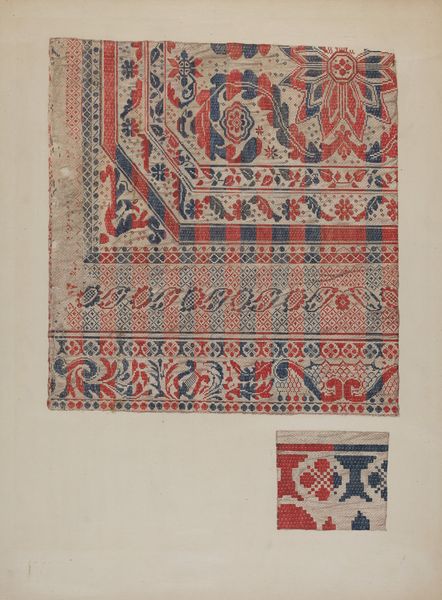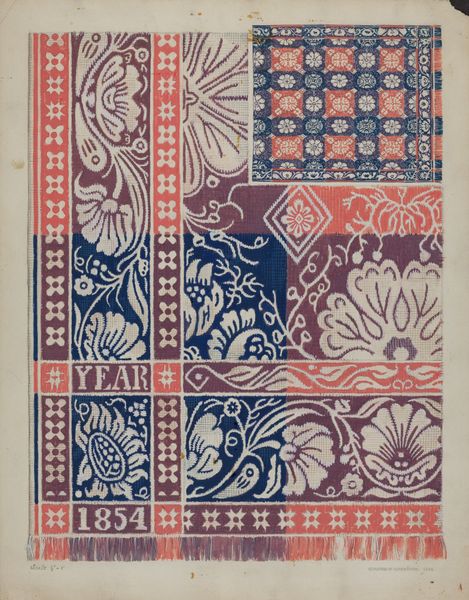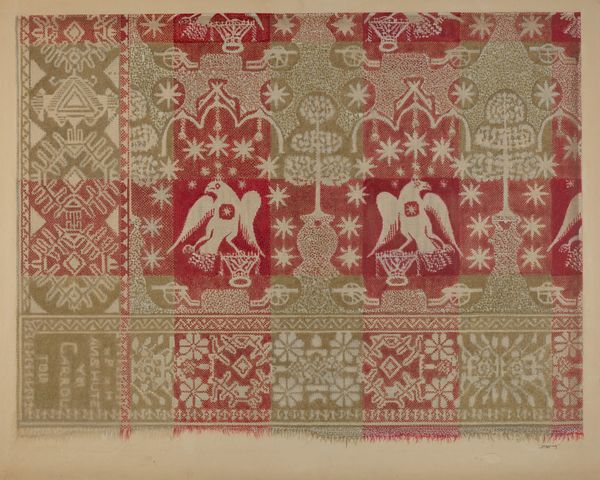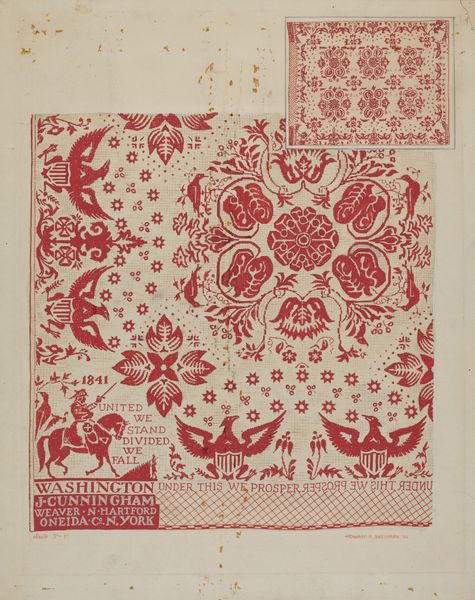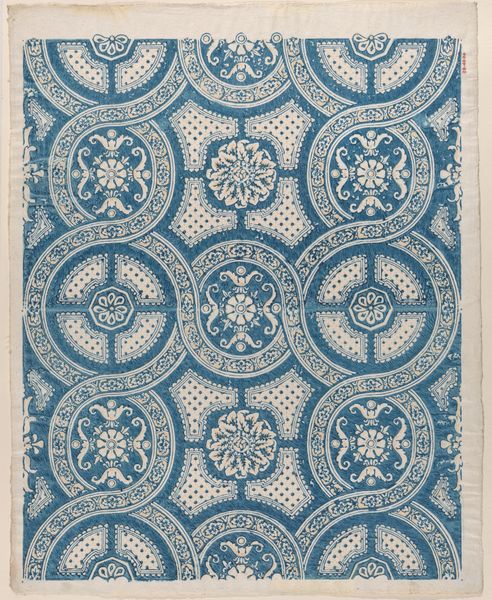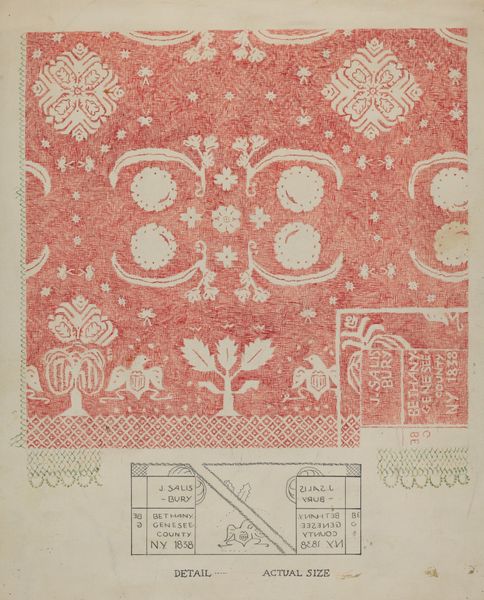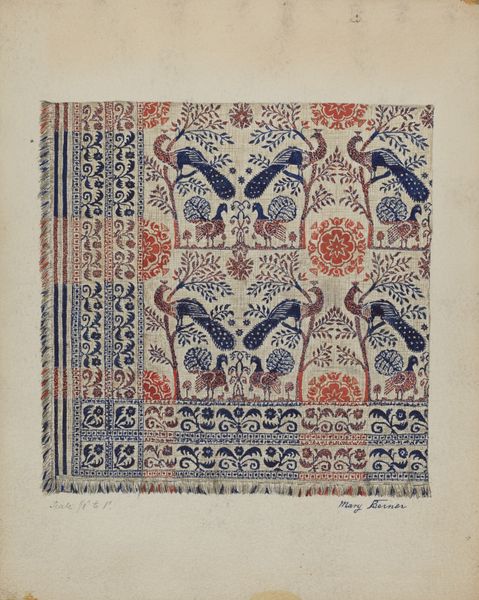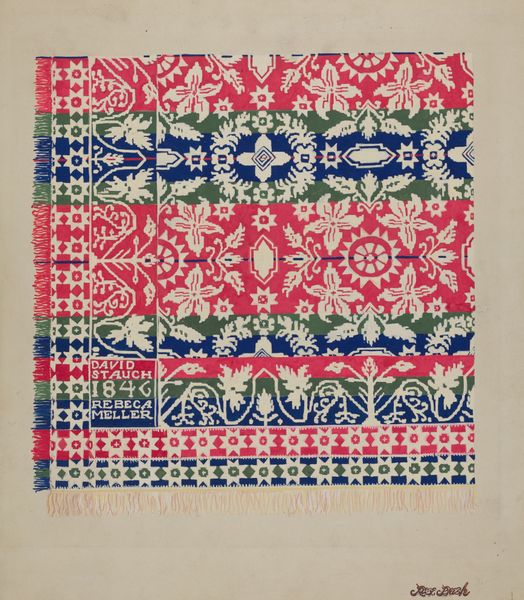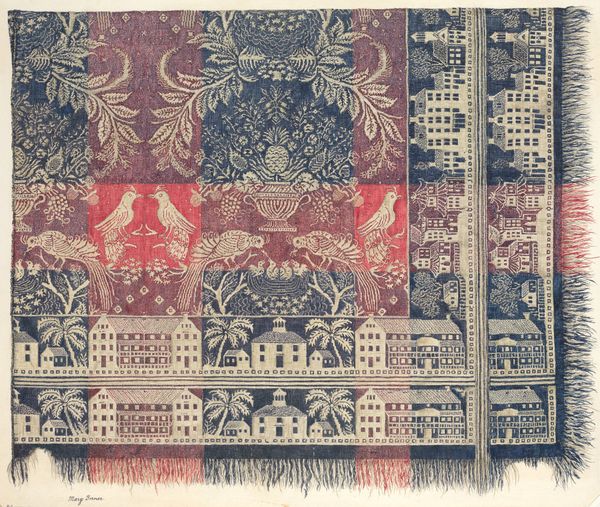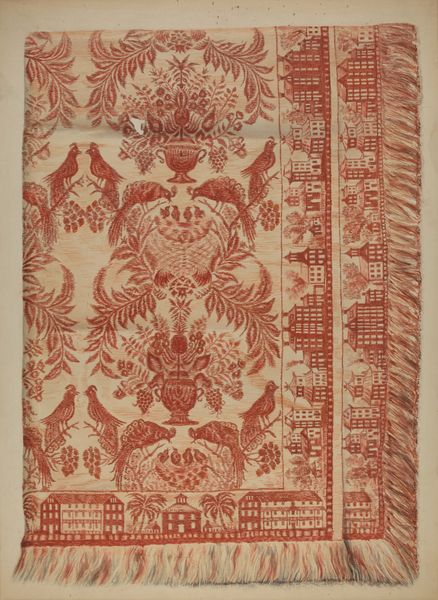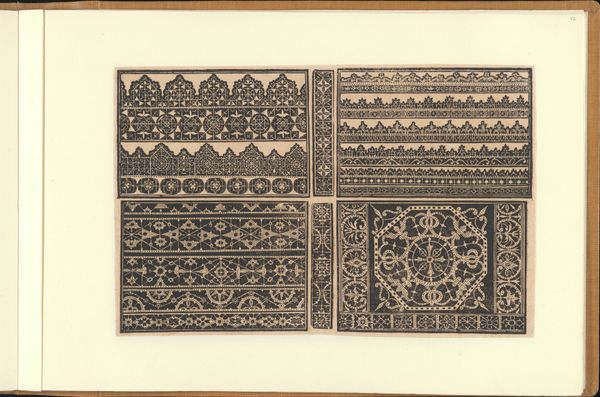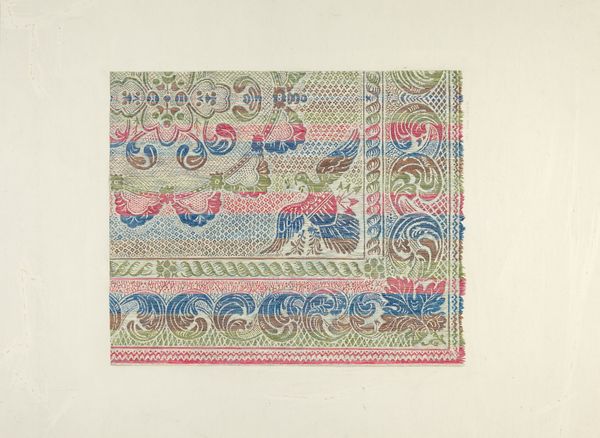
textile
#
organic
#
textile
#
organic pattern
#
geometric
#
textile design
#
decorative-art
Dimensions: overall: 46.9 x 69 cm (18 7/16 x 27 3/16 in.)
Copyright: National Gallery of Art: CC0 1.0
Curator: The piece before us is a coverlet design from around 1936, crafted by Albert Eyth. The patterns incorporate traditional quilt motifs with more modern drawing practices. What do you make of it initially? Editor: My immediate reaction is to focus on the visual harmony, the interplay of vibrant red and blue hues against a crisp white background. The geometric structure—the juxtaposition of straight lines and floral forms—it all speaks to a deep-seated desire for order and balance. Curator: Absolutely. Considering the period—mid-1930s—we have to acknowledge the shadow of the Great Depression, the rise of international tensions, and consider the desire for warmth and refuge and even, perhaps, escape reflected in familiar geometric, floral elements like stylized blooms, leafy stems, or vine meanders. Editor: Do you see any connection to other modernists or designers of the period? The drawing displays this graphic flatness so admired during the era. Curator: I think Eyth draws heavily from early twentieth century textile traditions as an effort to reinforce regional pride amidst that hardship. We have to remember the textile industry played a pivotal role in shaping many communities. By re-imagining those designs, he’s reminding people of their shared heritage. Editor: Speaking of shared heritage, the repetition of design evokes the repetitive tasks of home life of women within society. Can we connect this repetition in domestic patterns, a world often considered "private," to their contributions in wider political activism, a more "public" form of influence. Curator: Most definitely, particularly through the tradition of quilting circles which played vital roles for groups looking to make social changes during the New Deal Era. Editor: A simple coverlet drawing can indeed be the fabric of change. A compelling connection between the art, the social history, and the women making a difference. Curator: Indeed. Next time you are looking for answers in art, be sure to look under the covers. Editor: I’ll never see textiles the same way again, it’s been eye-opening. Thank you.
Comments
No comments
Be the first to comment and join the conversation on the ultimate creative platform.
